Effective Construction Waste Clearance in Thornton Heath
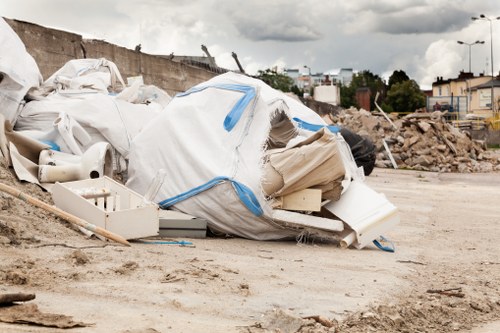
Introduction to Construction Waste Clearance
Construction projects, whether residential, commercial, or industrial, invariably produce a significant amount of waste. Proper construction waste clearance in Thornton Heath is essential for maintaining a clean and safe environment. Efficient waste management not only ensures compliance with local regulations but also contributes to sustainability by reducing landfill usage.
Thornton Heath, a vibrant area with ongoing development, requires reliable waste clearance services to handle the continuous influx of construction debris. From small renovations to large-scale building projects, managing waste effectively is crucial for project success.
In this article, we will explore the key aspects of construction waste clearance in Thornton Heath, including the types of waste generated, the importance of proper disposal, and tips for selecting the right waste clearance service.
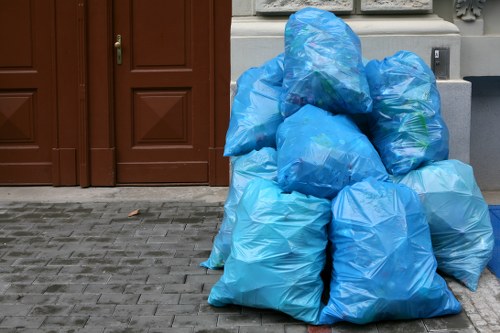
The Importance of Proper Construction Waste Clearance
Proper waste clearance is integral to any construction project. It ensures that the site remains organized, reducing the risk of accidents and facilitating smoother operations. Additionally, responsible waste management minimizes the environmental impact by promoting recycling and reducing the amount of waste sent to landfills.
In Thornton Heath, stringent environmental regulations mandate the proper disposal of construction waste. Non-compliance can result in hefty fines and project delays. Therefore, partnering with a reputable waste clearance service is essential for adhering to local laws and maintaining a positive project timeline.
Moreover, effective waste clearance can lead to cost savings. By efficiently managing waste, construction teams can optimize site space and reduce the need for additional storage, thereby lowering overall project costs.
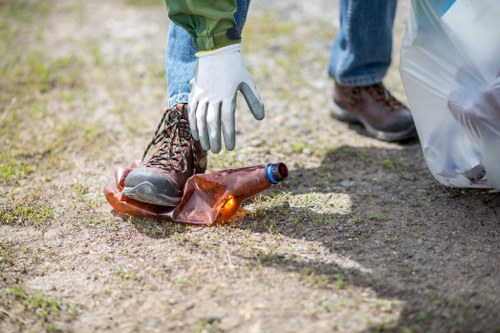
Types of Construction Waste
Construction sites generate various types of waste, each requiring specific disposal methods. Understanding these categories is vital for effective waste management:
- Concrete and Masonry: Includes broken bricks, concrete chunks, and stone materials.
- Metal: Scrap metal from structures, wiring, and piping.
- Wood: Offcuts, pallets, and other wooden materials.
- Plastics: Packaging materials, pipes, and insulation.
- Hazardous Waste: Paints, solvents, and chemicals requiring special handling.
Each type of waste must be sorted and disposed of according to local regulations to ensure environmental compliance and safety.
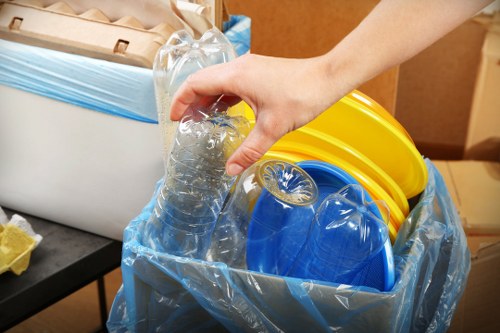
Benefits of Professional Waste Clearance Services
Choosing professional waste clearance services in Thornton Heath offers numerous advantages:
- Efficiency: Experienced teams manage waste swiftly, keeping the construction timeline on track.
- Compliance: Professionals are well-versed in local regulations, ensuring all disposal methods meet legal standards.
- Safety: Proper handling and disposal reduce the risk of accidents and environmental hazards.
- Recycling: Many services prioritize recycling, contributing to sustainable construction practices.
- Cost-Effectiveness: By managing waste efficiently, professional services can help lower overall project costs.
These benefits underscore the importance of investing in reliable waste clearance solutions for any construction project.
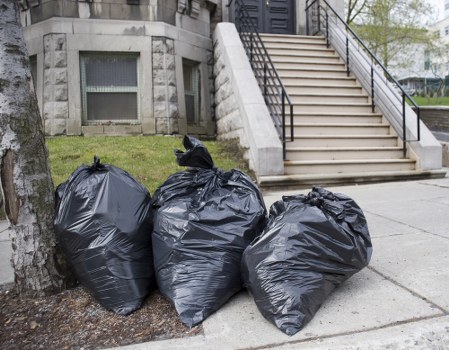
Choosing the Right Waste Clearance Service
Selecting the appropriate construction waste clearance provider in Thornton Heath involves several considerations:
- Experience: Look for services with a proven track record in handling construction waste.
- Range of Services: Ensure they offer comprehensive solutions, including sorting, recycling, and disposal.
- Environmental Commitment: Choose companies that prioritize eco-friendly practices.
- Pricing: Compare quotes to find a service that offers value without compromising quality.
- Customer Reviews: Positive feedback indicates reliability and customer satisfaction.
By carefully evaluating these factors, you can select a service that aligns with your project needs and sustainability goals.

Steps in Construction Waste Clearance
The process of waste clearance typically involves the following steps:
- Assessment: Evaluating the volume and types of waste generated.
- Sorting: Separating materials for recycling, reuse, or disposal.
- Collection: Gathering the sorted waste from the site.
- Transportation: Moving the waste to designated recycling centers or landfills.
- Disposal: Properly disposing of non-recyclable or hazardous materials.
Each step is critical to ensuring that waste is managed responsibly and efficiently.

Environmental Impact of Construction Waste
Improper disposal of construction waste can have severe environmental consequences. Landfills are rapidly reaching capacity, and non-biodegradable materials contribute to long-term pollution. Additionally, hazardous waste can contaminate soil and water sources, posing risks to human health and ecosystems.
By implementing effective waste clearance practices, construction projects in Thornton Heath can significantly reduce their environmental footprint. Recycling materials like metal, wood, and concrete not only conserves resources but also reduces greenhouse gas emissions associated with manufacturing new materials.
Furthermore, sustainable waste management enhances the community's quality of life by preventing unsightly debris accumulation and preserving natural landscapes.

Recycling and Reuse
Recycling plays a pivotal role in construction waste clearance. Materials such as metal, wood, and certain plastics can be repurposed, reducing the demand for new raw materials and minimizing waste. Reuse initiatives also encourage the repurposing of materials within the construction industry, fostering a circular economy.
- Metal Recycling: Steel and aluminum can be melted down and reused in new construction projects.
- Wood Recycling: Salvaged wood can be used for flooring, paneling, or other structural elements.
- Concrete Recycling: Crushed concrete can serve as a base material for roads and other infrastructure.
Implementing these practices not only benefits the environment but also offers cost savings by reducing the need for new materials.

Legal Requirements and Compliance
Construction waste clearance in Thornton Heath must adhere to local and national regulations. These laws dictate how different types of waste should be handled, stored, and disposed of to protect public health and the environment.
- Waste Sorting: Separate hazardous from non-hazardous waste.
- Proper Storage: Use appropriate containers and secure storage areas to prevent contamination.
- Timely Disposal: Ensure that waste is removed from the site within regulatory timeframes.
- Documentation: Maintain records of waste disposal methods and quantities.
Non-compliance can lead to fines, project delays, and damage to a company's reputation. Therefore, understanding and following these regulations is essential.

Cost Considerations
The cost of construction waste clearance can vary based on several factors:
- Volume of Waste: Larger projects produce more waste, increasing disposal costs.
- Type of Waste: Hazardous materials often require special handling, which can be more expensive.
- Service Frequency: Regular clearance may reduce costs through negotiated rates.
- Location: Proximity to disposal sites can affect transportation costs.
- Recycling Rates: Higher recycling can lower disposal fees.
To manage costs effectively, it's important to plan waste clearance ahead of time and choose a service that offers transparent pricing and value for money.

Technological Advances in Waste Clearance
Advancements in technology have enhanced the efficiency and effectiveness of waste clearance services. Innovations such as automated sorting systems, GPS tracking for waste trucks, and digital management platforms streamline operations and improve accuracy.
These technologies enable waste clearance companies to optimize routes, reduce fuel consumption, and ensure timely disposal. Additionally, data analytics can help in forecasting waste volumes and planning resources accordingly, making the process more sustainable and cost-effective.
Embracing technological solutions not only improves service quality but also supports environmental sustainability through better resource management.

Eco-Friendly Waste Clearance Practices
Adopting eco-friendly practices in construction waste clearance is essential for sustainable development. Strategies include:
- Comprehensive Recycling: Maximizing the recycling of materials to reduce landfill dependency.
- Eco-Friendly Transportation: Utilizing fuel-efficient vehicles to minimize carbon emissions.
- Green Certifications: Partnering with certified waste clearance providers who follow environmentally responsible protocols.
- Waste Minimization: Implementing practices that reduce the overall generation of waste at the source.
These practices not only protect the environment but also enhance the reputation of construction companies as responsible and forward-thinking.

Case Studies: Successful Waste Clearance in Thornton Heath
Several construction projects in Thornton Heath have successfully implemented effective waste clearance strategies:
- Residential Development: A large housing project utilized a local waste clearance service that implemented rigorous sorting and recycling, resulting in a 70% reduction in landfill waste.
- Commercial Complex: A commercial building project partnered with an eco-friendly waste management company, leading to timely waste removal and adherence to environmental standards.
- Renovation Project: A historic building renovation benefited from specialized waste clearance, ensuring the safe disposal of hazardous materials without damaging the surrounding environment.
These examples demonstrate the positive impact of professional waste clearance on project efficiency and environmental stewardship.

Future Trends in Construction Waste Clearance
The construction industry is continuously evolving, and waste clearance practices are no exception. Future trends include:
- Increased Automation: Adoption of robotics and AI for sorting and managing waste more efficiently.
- Circular Economy Models: Emphasizing the reuse of materials to create a closed-loop system, minimizing waste generation.
- Advanced Recycling Technologies: Developing new methods to recycle previously non-recyclable materials.
- Integration with Smart Construction: Using IoT devices to monitor waste production in real-time and optimize clearance processes.
- Enhanced Sustainability Standards: Stricter regulations and higher standards driving the adoption of greener waste management practices.
Staying abreast of these trends will be crucial for construction waste clearance services to remain competitive and environmentally responsible.

Conclusion
Effective construction waste clearance in Thornton Heath is a critical component of successful construction projects. It ensures compliance with regulations, promotes sustainability, and contributes to overall project efficiency.
By understanding the types of waste generated, the importance of proper disposal, and the benefits of professional services, construction companies can make informed decisions that benefit both their projects and the environment.
Emphasizing eco-friendly practices and staying updated with industry trends will further enhance waste management strategies, paving the way for a greener and more sustainable future in Thornton Heath.
Contact us today to learn more about our expert construction waste clearance services and how we can assist in keeping your projects clean, compliant, and sustainable.